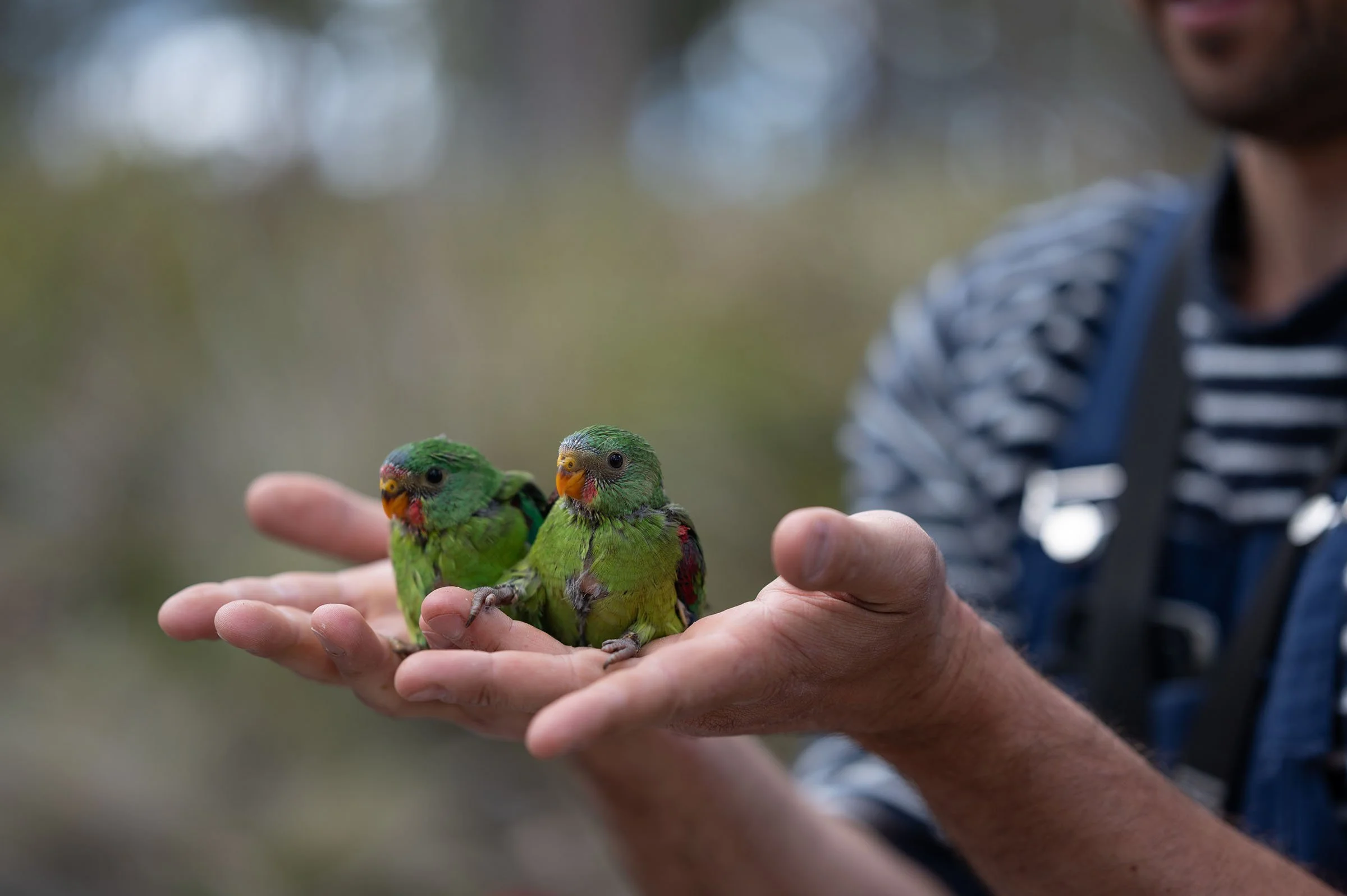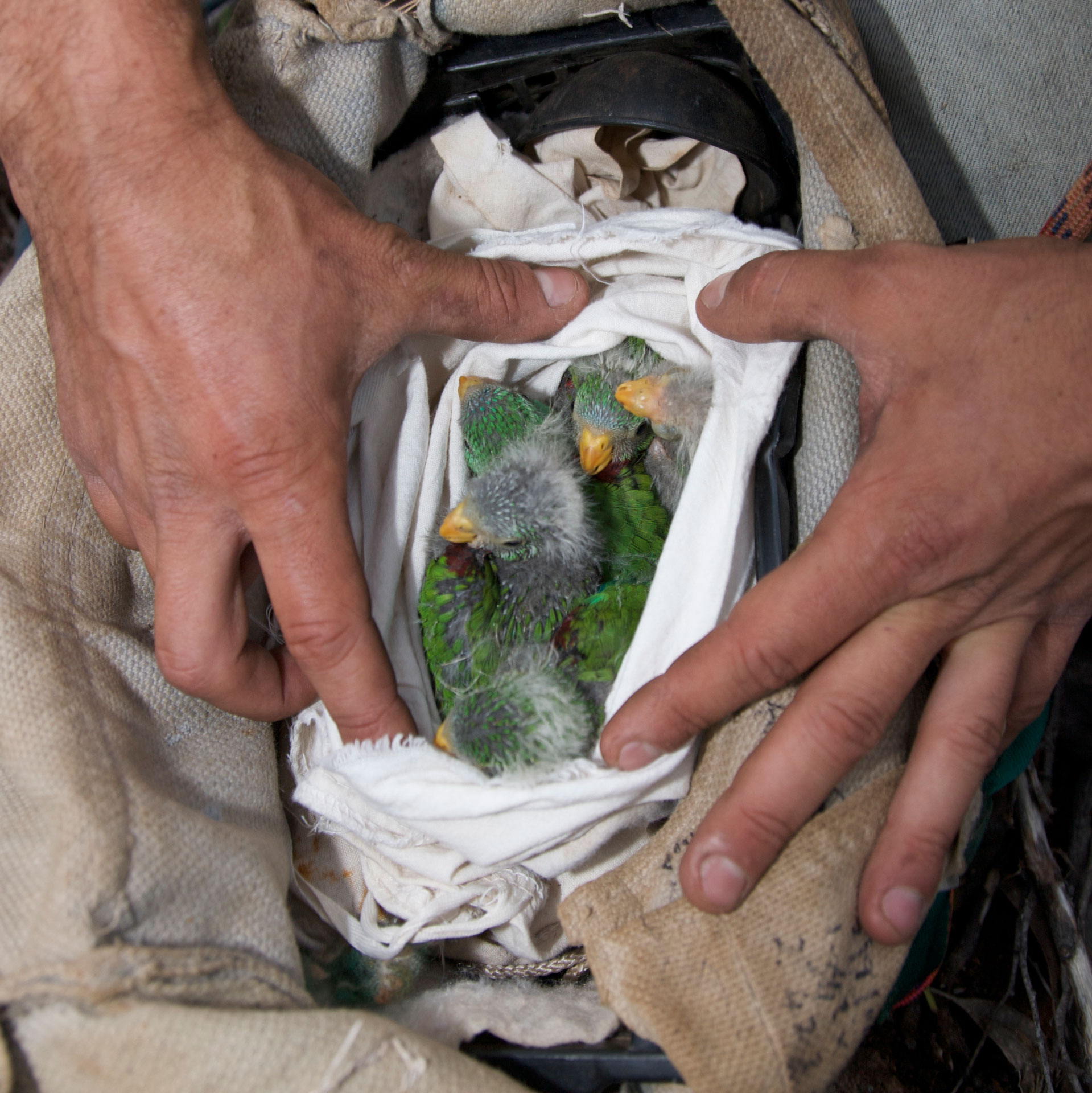Species
Swift Parrots are a critically endangered nomadic migratory bird found only in south-eastern Australia. Their small population of less than 2000 birds is continuing to decline largely due to loss of habitat in both their breeding range (eastern Tasmania) and non-breeding range in south-eastern mainland Australia. A newly identified threatening process, predation by introduced sugar gliders in Tasmania, is also a major driver of their continued demise. Sugar gliders kill and eat adult female swift parrots while they are incubating their eggs, as well as the eggs and nestlings. Up to half of the nesting parrots can be eaten by sugar gliders every year. Swift parrots require two distinct but related habitat features to breed (1) food from flowering trees and (2) tree hollows for nesting. If these resources don’t overlap in space and time, breeding cannot occur. In their wintering range, swift parrots undertake long distance nomadic movements to find food.
Why it’s difficult
Swift parrots depend on suitable conditions across multiple, distant locations throughout their migratory cycle. Managing the species poses substantial challenges because of the great plasticity in their annual movements in response to highly variable climatic conditions, their drastically reduced numbers and their dependence on habitats in modified landscapes. Swift parrots also nest in extremely remote and rugged terrain in Tasmania, nesting in treetops of old growth forest.
What we’re doing
Landscape scale
We established a population monitoring program in 2009 through collaboration between the project team, the Swift Parrot Recovery Team, the Commonwealth and Tasmanian Governments and BirdLife Australia which addresses key actions of the swift parrot Recovery Plan. The monitoring program surveys >1000 sites in potential foraging habitat across the breeding range to track annual variations in the distribution and relative abundance of the swift parrot population and provides a measure of available breeding habitat as defined by tree flowering. Results from this landscape scale monitoring are then used to guide a survey of nesting habitat to assess the spatial distribution and density of breeding birds and factors affecting nest site selection. These data have allowed us to track trends in swift parrot site occupancy and abundance over several years, investigate habitat use and to identify priority areas of habitat. These data are crucial for understanding how the birds respond to patchy and unpredictable tree flowering events by shifting the locations where they breed.
We also are working on the Australian mainland where swift parrots spend the winter. In collaboration with the NSW Government we are undertaking a project that focuses on the western slopes in the Riverina and drought refuge habitat on the Central Coast. This work represents the most extensive winter habitat restoration project ever undertaken, and will build on long term knowledge about the species winter habitat use. We are also investigating changing use of habitats over the past 20 years on the Australian mainland by swift parrots, as well as the implications for land management in relation to changing climate.
Fine scale
Using our landscape scale monitoring data, we identify where swift parrot nesting aggregations occur each year across Tasmania. Swift Parrot breeding sites vary annually over a large range of fragmented habitat in south-eastern Tasmania, with the exact location of breeding each year depending on the intensity of local blue or black gum flowering and the availability of tree hollows for nesting. We are leading the first study to identify determinants of their breeding site choice and reproductive success against the backdrop of the annual variations in the distribution and availability of breeding habitat which has been dramatically altered and fragmented since European settlement, and the increased mortality rates due to predation by introduced sugar gliders. Our research has shown that nomadic movements within Tasmania to the best available flowering conditions to breed successfully, but that the effect of sugar gliders on their populations can be very severe in some places. We are also undertaking ground breaking research using high tech GPS loggers and motion activated cameras to identify where breeding swift parrots search for food while nesting and to identify the causes of nesting failure.














